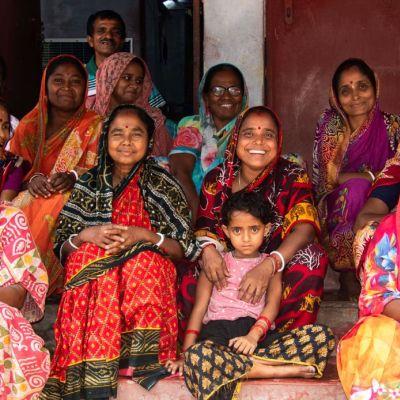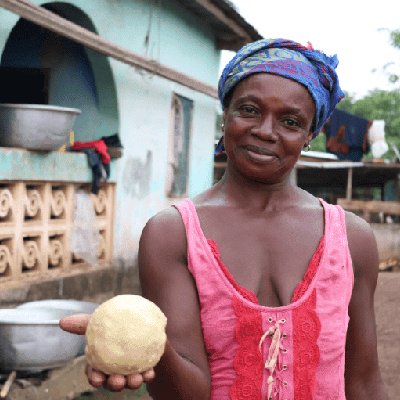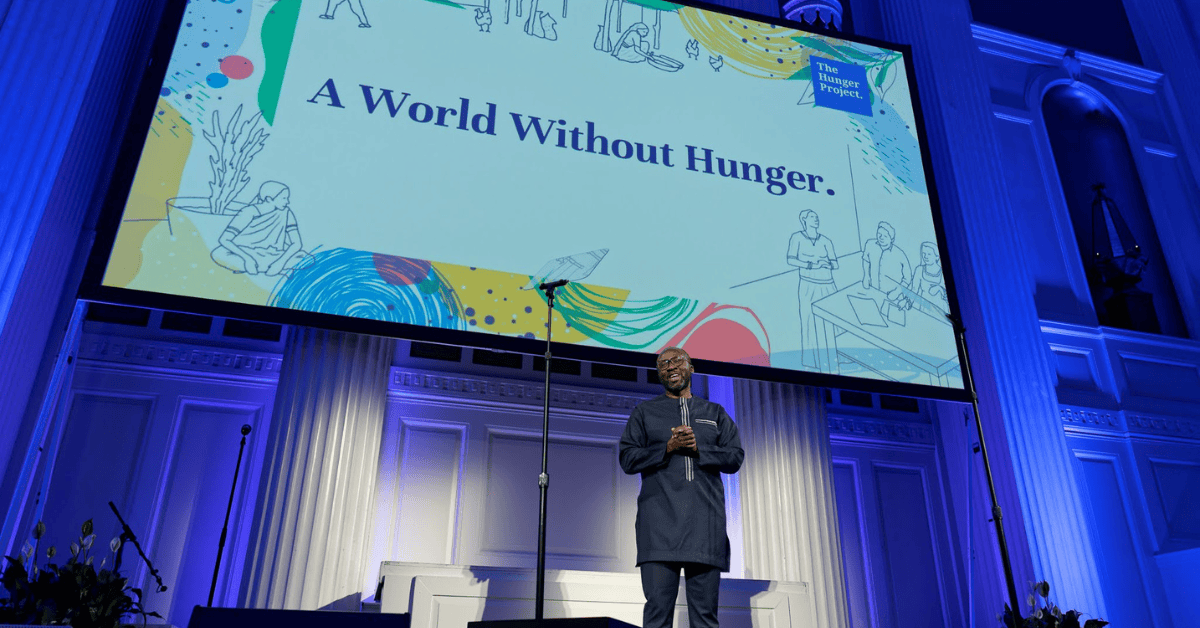Here's how we are addressing the issue:
- Empowering Local Leaders (Animators): The Hunger Project trains local volunteers - called Animators - who act as catalysts for change in their communities. These Animators equip their communities with knowlege about climate change impacts, sustainable farming practices, and climate adaption strategies including weather information systems and climate-smart calendars.

For example, Ernestina Serwaa (pictured left) is an agricultural animator in the Adomfe Epicenter in Ghana. She works with local farmers and local government agencies to ensure that local farmers are implementing the best practices for farming in their area. The result being increased yields and increasing harvests.
- Promoting Sustainable Farming Practices: In local communities, The Hunger Project is facilitating the adoption of sustainable agricultural techniques. Including things like introducing drought resistant crops like sorghum and millet in areas affected by changing rainfall patterns and promoting organic, integrated farming systems through workshops on home gardening, post-harvest management and animal husbandry. As well as teaching methods to improve crop yields and restore soil fertility.

Take Sabistone, pictured above, from Chambo Village which is part of the Majete 3 Epicenter in Malawi. Taking part in agricultural workshops at his Epicenter allowed him to grow his yield from farming. With these profits he invested in livestock to help secure and diversify his income. Now he has a thriving farm with crops and animals which he can use to sustain his family and himself.
- Diversifying Livelihoods: As seen clearly in the story above, The Hunger Project encourages people to look beyond farming and agriculture given the risks of future climate shocks. Programmes are offered to help people identify new skills and trades that can supplement their farming practices. Skills such as animal husbandry, beekeeping, dress making and tailoring, even cookie making from the farming yields are all part of the work being done to create the sustainable end of hunger in our communities.
- Reforestation and Environmental Sustainability: Throughout our programme countries, we are establishing tree nurseries, which can reforest communities, control soil erosion and even create entrepreneurial ventures by supplying fruit trees that offer both nutrition and income.

This photo is of a nursery project in Ethipoia where the community is working to restore the natural forest in Gewocha. When the seedlings are ready, each community member receives trees and plants them in different locations to help restore the ecological system that has been degraded after years of agricultural and cattle farming. In the words of Teshome, a community member - "We are not just doing this for our families, we are doing it for the whole community - and the whole planet. With climate change we all need to contribute."
- Community-Led Planning and Development: At our Epicenters a Climate Committee is founded with a focus in participation by all including youth and women. These committees lead activities, foster partnerships, support farmers in adapting to changes, and help produce and review community action plans against climate change. In the photo below you will see a community agricultural project taking place in Chiapas Mexico

By focusing on these community led, holistic and sustainable approaches, The Hunger Project aims to build resilience from the ground up - enabling communities to withstand and adapt to the impacts of climate change and achieve lasting food security.









